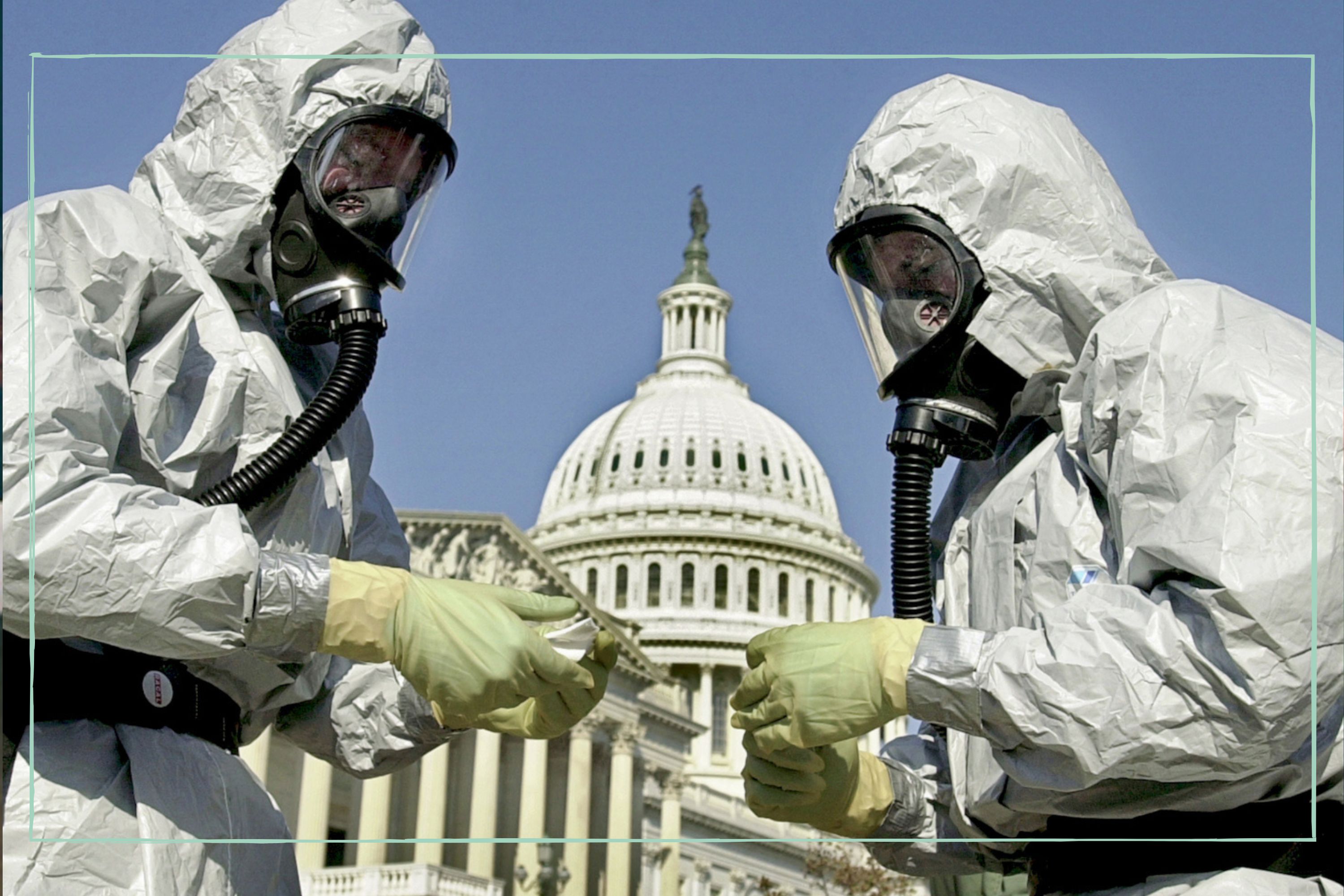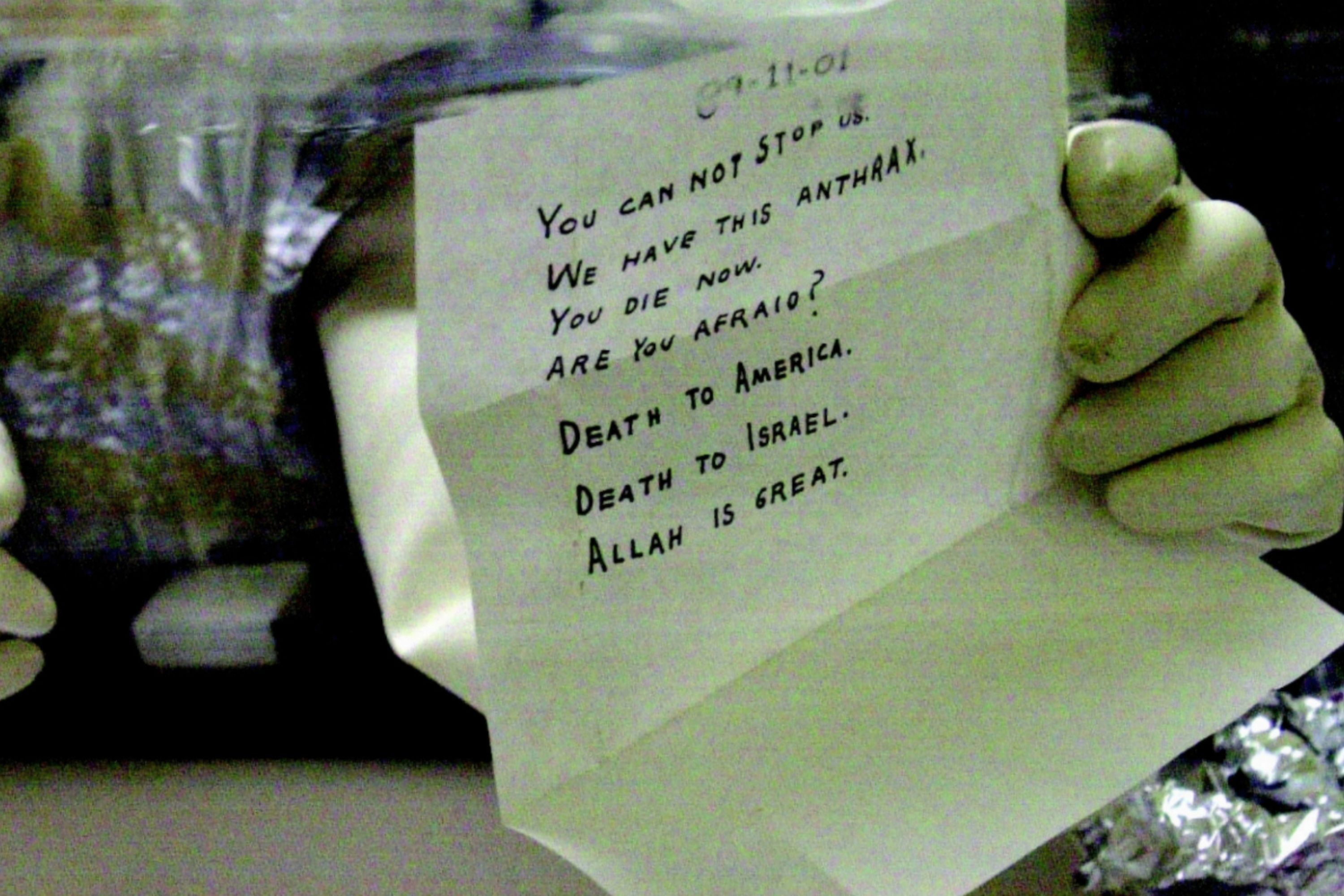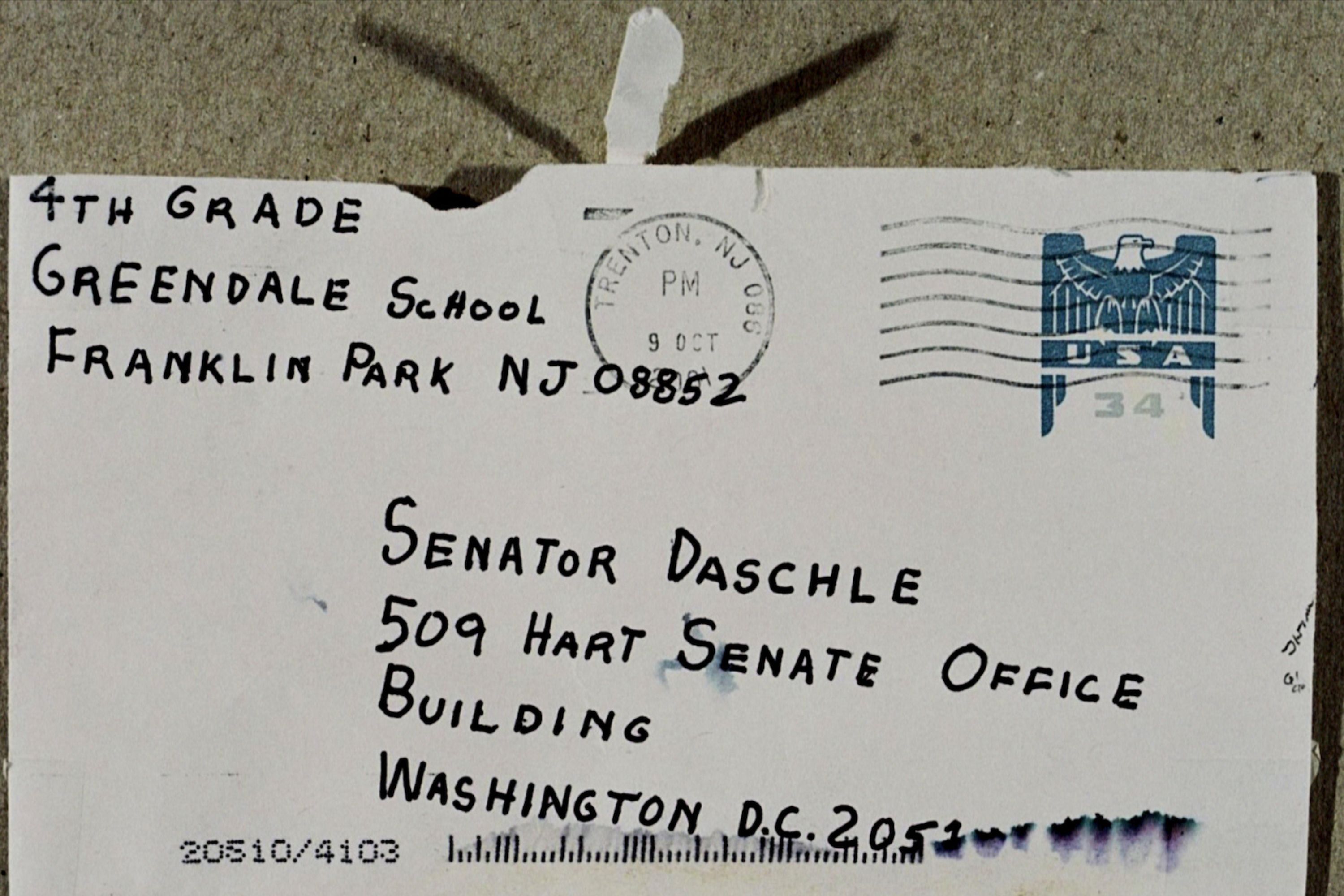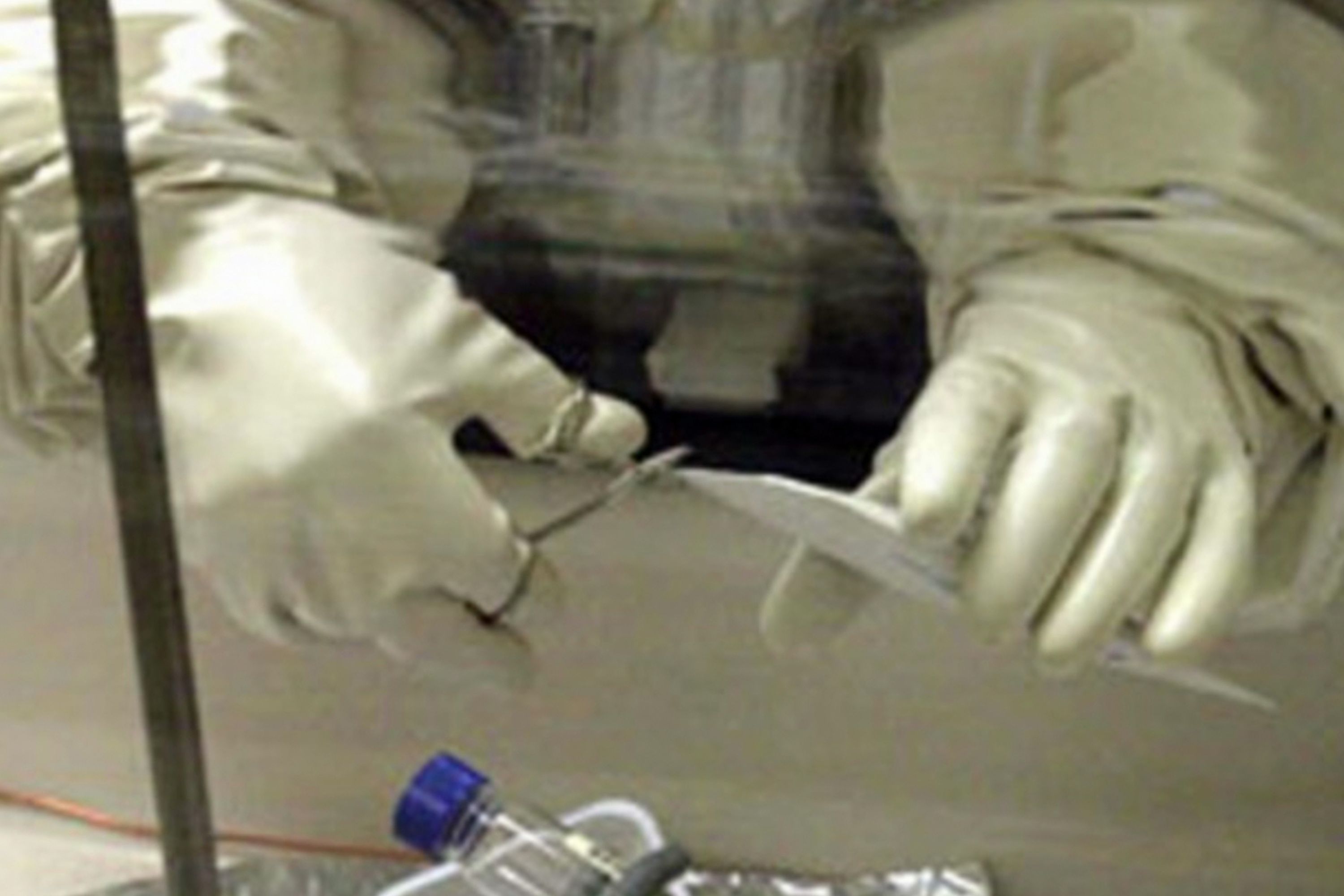The Anthrax Attacks on Netflix: Who was responsible and how many people died?
The true story behind Netflix's newest docuseries


In the wake of 9/11, America was gripped by a wave of terror from another enemy. Audiences are learning more about this in new series The Anthrax Attacks on Netflix.
The 2001 Anthrax Attacks are also commonly known by the portmanteau “Amerithrax”. The subsequent investigation became one of the biggest and most complex the FBI had ever undertaken. Beginning one week following the events of 9/11, the attacks sent the US spiralling further into panic following the terrorist attack it was already reeling from. New Netflix docuseries The Anthrax Attacks, tells the story of events through actor re-enactments. Directed by Oscar nominated director Dan Krauss, the retelling examines the story of the families involved - and the doctors making difficult decisions about their care.
Netflix has a plethora of documentaries ready to be devoured - mostly involving true crime. Viewers are asking where is Tim Donaghy now - the former NBA referee at the centre of a gambling scandal - after watching the latest Untold installment on the streamer. Intrigue also surrounds the whereabouts of Hunter Moore now - the revenge porn criminal from Netflix’s The Most Hated Man on the Internet. Viewers of the latter are also curious where Charlotte Laws is now - the woman responsible for taking Moore down and getting a conviction.
What were the Anthrax Attacks in 2001?
On September 18, 2001 - exactly one week following 9/11 - letters laced with Anthrax were mailed to news offices and Democratic Senators Tom Daschle and Patrick Leahy. The following events are known as the worst biological attack in U.S. history.
According to NPR, Bob Stevens of American Media in Florida was the first victim to be hospitalised with inhalation anthrax on October 4, 2001. Anthrax was then found at the offices of the National Inquirer publisher American Media, on October 9. The building was closed immediately and the FBI began their investigation the following day.
Continuing into November, several more people were infected with the substance, including postal workers, Doctors, and even a baby of an ABC News producer was affected. One postal facility in Washington, D.C. was only able to reopen following a renovation and deep clean costing $130 million.
It wasn’t until June 2002 that the FBI searched the residence of Steven Hatfill - a government scientist working in a Fort Derrick biodefense lab. Although Hatfill was named a person of interest, he was later exonerated and sued the New York Times for defamation. The FBI had another government scientist, Bruce Edwards Irvins, under investigation following Hatfill’s exoneration - however, Irvins took his own life in 2008.
GoodtoKnow Newsletter
Parenting advice, hot topics, best buys and family finance tips delivered straight to your inbox.
Approximately 25 to 30 full-time FBI investigators worked on the case, with their work involving more than 10,000 witness interviews across 6 continents. The execution of 80 searches was undertaken, recovering more than 6,000 items of potential evidence. The case was formally closed on February 19, 2010.
Who was responsible for the Anthrax Attacks?
Bruce Ivins is widely suspected of having carried out the Anthrax Attacks, although he took his own life before any charges could be filed. He was declared the sole culprit on August 6, 2008, due to DNA evidence leading to an anthrax vial in his lab.
According to the New York Times, quotes from the FBI report into the attacks said: “Dr. Ivins was psychologically disposed to undertake the mailings; his behavioral history demonstrated his potential for carrying them out; and he had the motivation and the means”. The report detailed Ivins’s secret criminal life, which included an obsession with sorority Kappa Kappa Gamma, and numerous break-ins at its offices.
He was also alleged to show obsessive behaviour towards two laboratory technicians, stalking them and taking long night drives to deliver packages, often under assumed names.
The report continued: “A man like him, who had committed repeated acts of breaking and entering as well as burglary without having been caught, would have little difficulty mailing the letters late at night or early in the morning without being seen”.
However, NPR continued to report that an independent review of the science used in the FBI investigation, concluded evidence was consistent with the notion Ivins could have been the perpetrator. But on its own, the science still didn’t prove Ivins’ guilt. He does however, remain the sole suspect in the case, and guilt has never been assigned to anyone else.

How many people were affected by the 2001 Anthrax Attacks?
There are 22 known people affected by the 2001 Anthrax Attacks. It cost over a billion dollars to decontaminate offices and buildings affected by the substance.
Very few doctors at the time had experience treating Anthrax, with the last reported case in the US prior to 2001 documented in 1976. According to the National Institutes of Health, the use of mail to spread anthrax spores served to spur biomedical and public health communities to develop countermeasures against Anthrax and other biological threats - this included Ebola and smallpox.
A senior member of the US Army medical research institute Dr. Arthur Friedlander, said at the time: “The horrendous possibility of using microbes to intentionally cause disease was realized. We were now focused on providing medical countermeasures”.
Because anthrax infections occur infrequently, human studies for treatment were not ethical or feasible. This resulted in the FDA issuing the Animal Rule in 2002 allowing “for the approval of drugs and licensure of biological products when human efficacy studies are not ethical and field trials to study the effectiveness of drugs or biological products are not feasible”.

How many people died in the Anthrax Attacks?
Five people died in the anthrax attacks of 2001. Four of the five victims were directly related to the case - having opened infected letters or been in the direct firing line of opened letters.
However, the fifth and final person to die from Anthrax initially baffled investigators. The 94-year-old woman, Ottilie Lundgren, was a resident of a rural farming community. She had no connection with the media or politics, and her home and mail tested negative for Anthrax spores.
Soil samples near her home were tested for contamination, but due to only 18 cases of inhalational Anthrax ever recorded in the US in the century prior to the attacks, bio-terrorism was still suspected.
It was concluded that Ottilie Lundgren was the unfortunate victim of cross-contaminated mail, despite no firm evidence to prove this.

What does Anthrax do to humans and can you survive?
The most serious effects of Anthrax include inability to respond to infection normally - resulting in multiple organ damage or sepsis. Inflammation of membranes and fluid covering the spinal cord and brain, can lead to haemorrhage and death.
According to Mayo Clinic, Anthrax can’t be transmitted from person to person. Bacteria can enter the body through a wound, or through eating Anthrax contaminated meat, or inhaling the spores. There are four common routes of Anthrax infection, with each displaying different signs and symptoms - symptoms usually develop within six days of exposure. The American Anthrax attacks were inhalation based, although there is also cutaneous, gastrointestinal, and injection Anthrax.
Common symptoms of inhalation Anthrax include flu-like symptoms such as sore throat, fever, fatigue and muscle aches. There may also be shortness of breath, nausea, coughing up blood, painful swallowing, breathing difficulties, shock, and meningitis. Inhalation anthrax is the most deadly form, and is usually fatal even with treatment.
According to the CDC, only about 10 - 15% of patients with inhalation Anthrax survive without treatment. This figure rises to 55% with aggressive treatment. Survival rates and treatment vary between the subtype of Anthrax infection.

When did the Anthrax Attacks stop?
The final reported attack took place on October 12, 2001. The investigation concluded in February 2010.
In 2002, President Bush announced an $11 billion investment over two years, to protect the US from bioterrorism. Biothrax - an anthrax vaccine, is available in the US for those aged 18 - 65, at increased risk of exposure. After exposure, the vaccine is given along with antibiotics.
According to the CDC, 9 out of 10 people exposed to anthrax will be protected by the vaccine, but it will not completely prevent symptoms from developing.
Related Netflix Features
- Where is Lori Vallow Daybell now from Netflix's Sins of our Mother?
- Where is Anthony Templet now? The son from Netflix's I Just Killed My Dad
- Where is Ronaiah Tuiasosopo now? Manti Te'o's catfish from Untold: The Girlfriend Who Didn't Exist
- What happened to John McAfee? His death, prison time and net worth explained
- Where is Janice McAfee now? Everything to know about John McAfee’s wife
- Where is Victoria Smith now from Netflix’s I am a Killer?
Video of the Week

Lucy is a mum-of-two, multi-award nominated writer and blogger with six years’ of experience writing about parenting, family life, and TV. Lucy has contributed content to PopSugar and moms.com. In the last three years, she has transformed her passion for streaming countless hours of television into specialising in entertainment writing. There is now nothing she loves more than watching the best shows on television and sharing why you - and your kids - should watch them.
-
 Balamory is back after two decades - why we can’t wait for the reboot of the iconic BBC series
Balamory is back after two decades - why we can’t wait for the reboot of the iconic BBC seriesWhat's the story in Balamory? Now you can find out, as the BBC announces the return of the beloved children's series nearly 20 years after the final episode aired.
By Lucy Wigley Published
-
 Is Francesca in Bridgerton gay? With more great representation in the show, this expert shares how to start the conversation around sexuality with your teen if they’re watching
Is Francesca in Bridgerton gay? With more great representation in the show, this expert shares how to start the conversation around sexuality with your teen if they’re watchingIs Francesca in Bridgerton gay? It's a question many have asked, and you might need to have conversations around sexuality with your teen if they’re watching.
By Lucy Wigley Published
-
 Is Eric a true story? Benedict Cumberbatch lives every parent’s worst nightmare in new Netflix show
Is Eric a true story? Benedict Cumberbatch lives every parent’s worst nightmare in new Netflix showIs Eric a true story? Every parent’s worst nightmare plays out in Netflix's latest show, against a backdrop of 80s New York grappling with AIDS and racism.
By Lucy Wigley Published
-
 Normal People season 2 rumours are circulating, and we have our own Marianne and Connell 'first love' stories to share
Normal People season 2 rumours are circulating, and we have our own Marianne and Connell 'first love' stories to shareNormal People season 2 rumours are flying around, and we have our own Marianne and Connell moments to share - because everyone remembers their first heartbreak.
By Lucy Wigley Published
-
 Channel 4 drama The Gathering explores 'toxic teenagers and their even more toxic parents' in an online world dominated by social media
Channel 4 drama The Gathering explores 'toxic teenagers and their even more toxic parents' in an online world dominated by social mediaNew Channel 4 drama explores the challenges of impossible standards set by social media, and how parents themselves become toxic in their need to protect their kids.
By Lucy Wigley Published
-
 Is Brandy pregnant? Bluey fans think the Heelers could be about to welcome a new cousin following the season 3 finale
Is Brandy pregnant? Bluey fans think the Heelers could be about to welcome a new cousin following the season 3 finaleEagle-eyed Bluey viewers are wondering if Aunt Brandy is pregnant, following a touching moment in the season three finale.
By Ellie Hutchings Published
-
 Is Bluey ending? What we know about the rumours around the kids' cartoon, as the Heelers put their house up for sale
Is Bluey ending? What we know about the rumours around the kids' cartoon, as the Heelers put their house up for saleBluey's producer has shared an update on the show's future
By Ellie Hutchings Published
-
 CoComelon has been accused of being 'overstimulating' - the experts explain why it's ok to let your kid watch the popular cartoon
CoComelon has been accused of being 'overstimulating' - the experts explain why it's ok to let your kid watch the popular cartoonCoComelon is adored by kids around the world, but some experts have shared reasons they don't think children should be watching - we look at both sides of the argument.
By Lucy Wigley Published